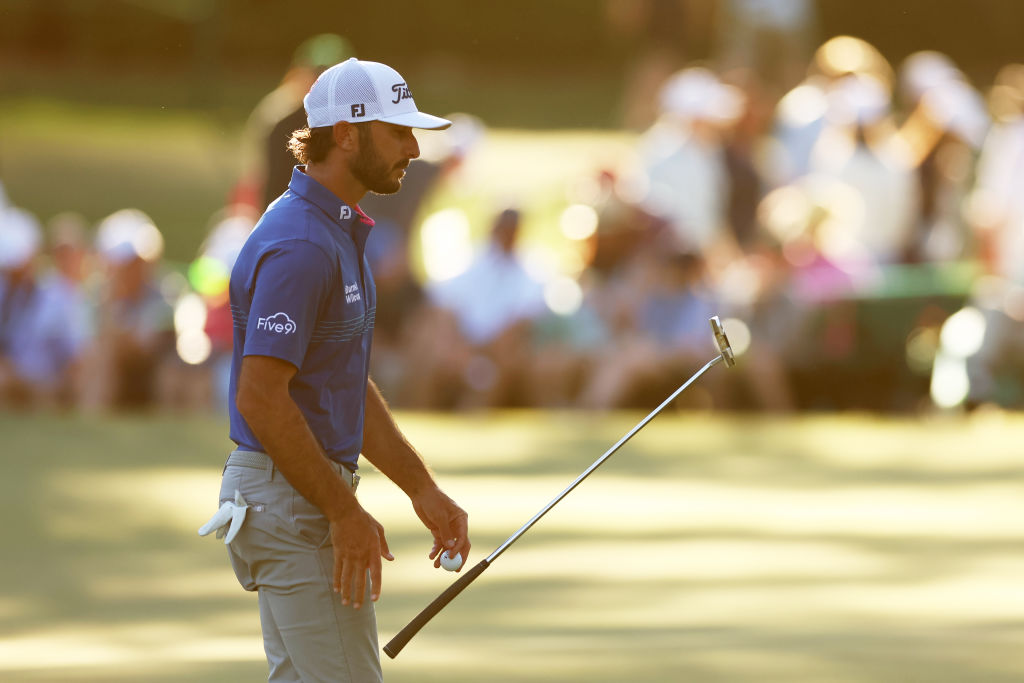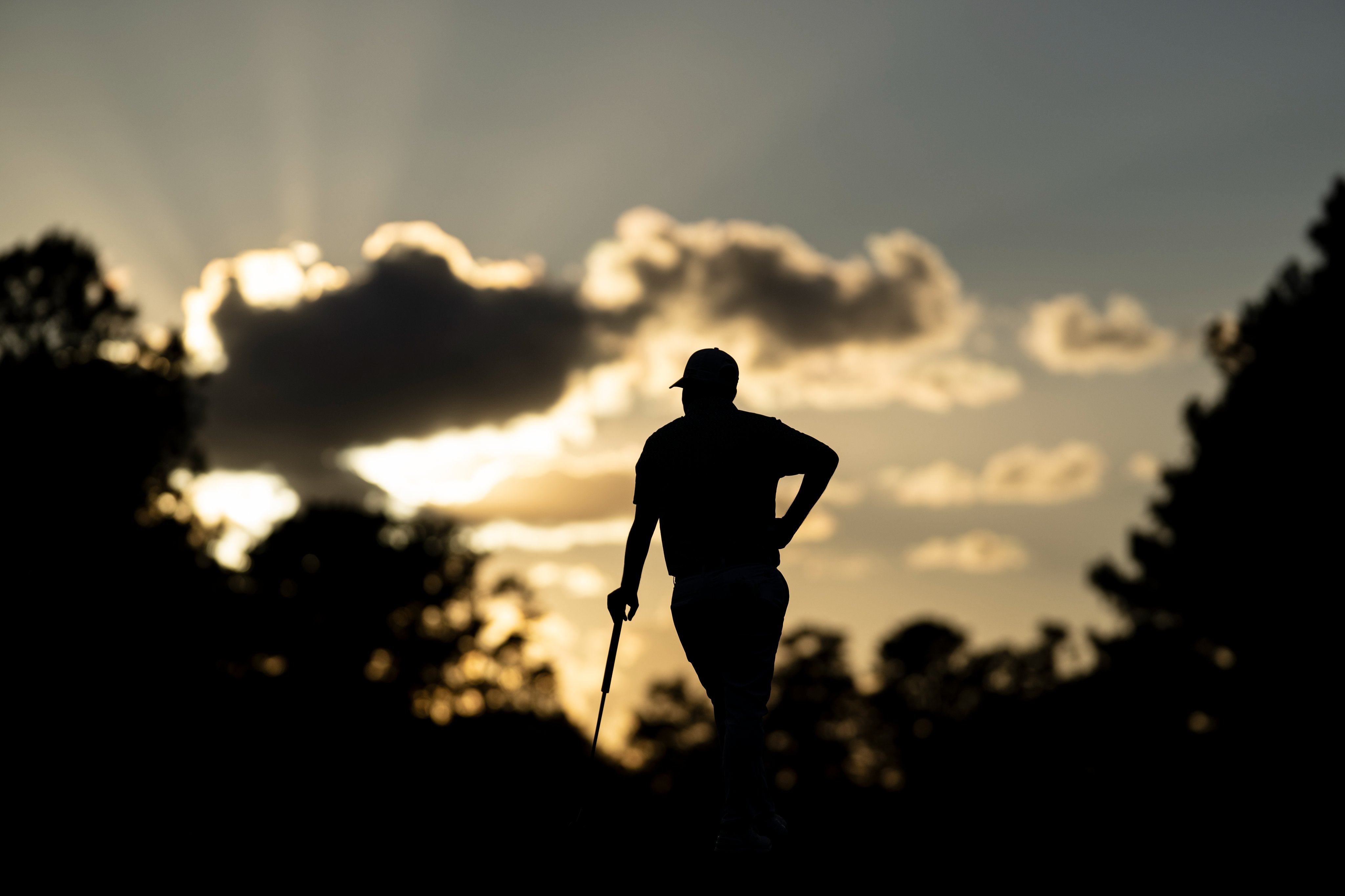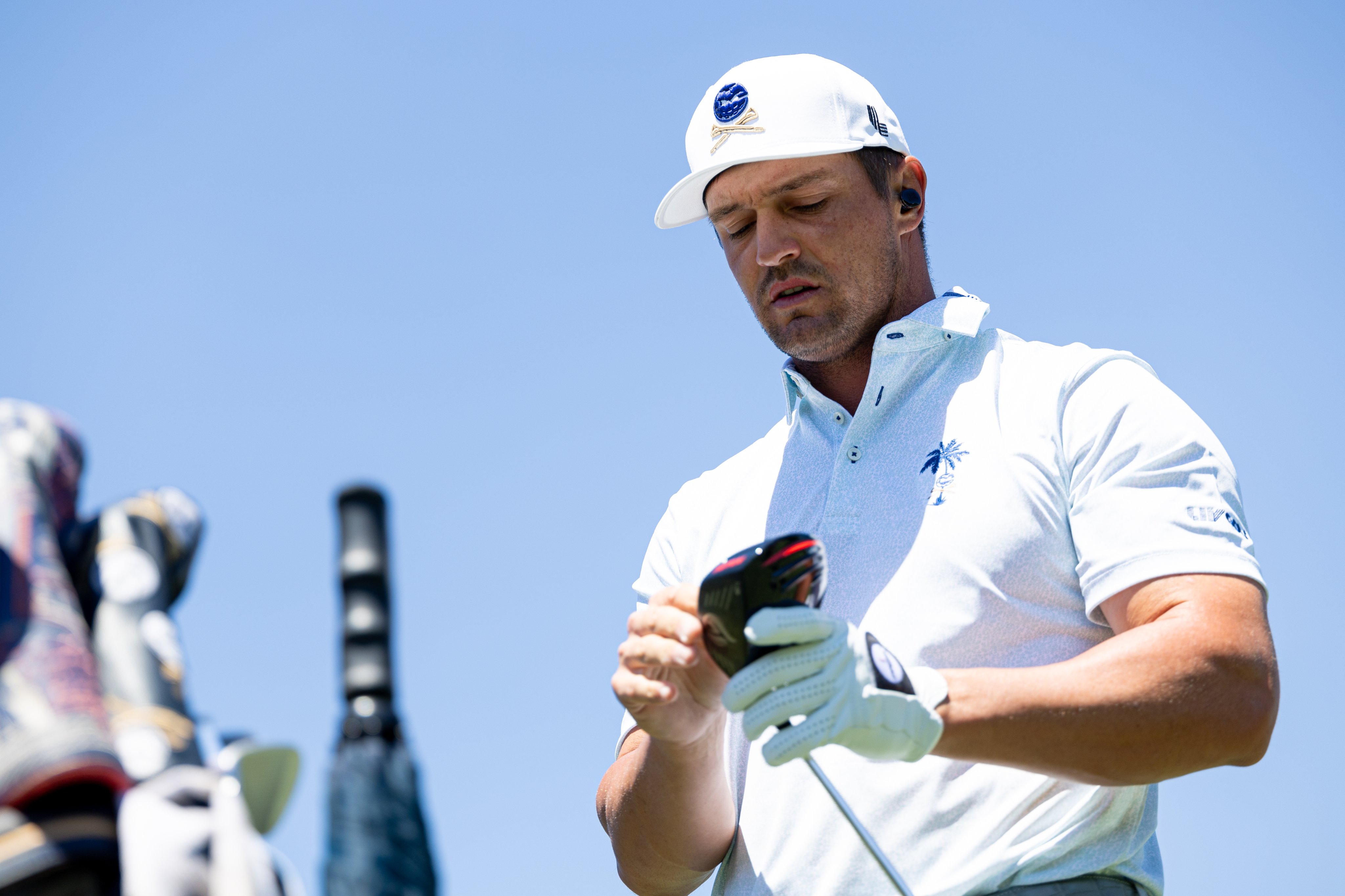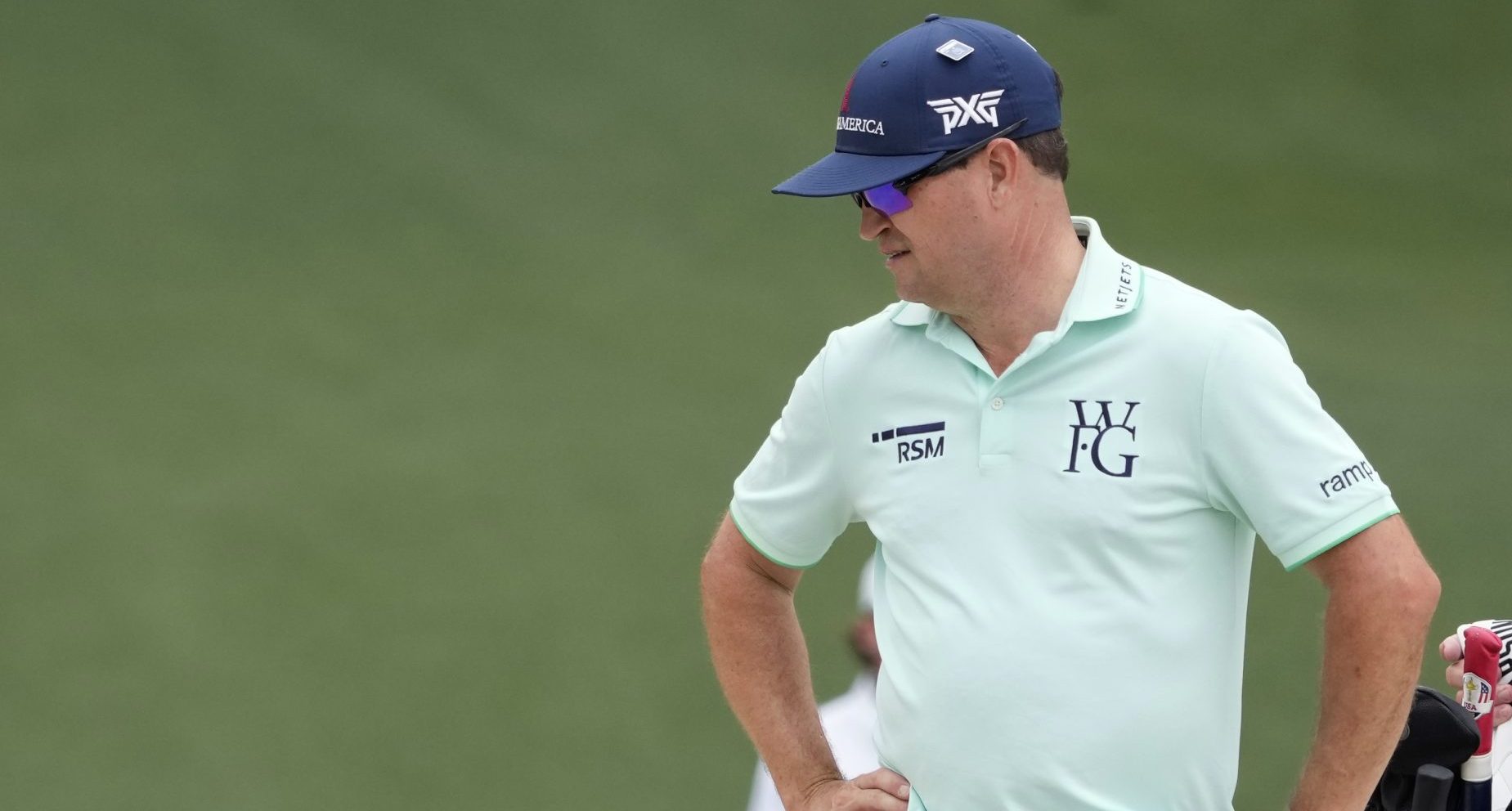Opinion
Spieth and the Career Grand Slam: What Does History Predict?
Two weeks ago at Royal Birkdale Golf Club in Southport, England, American Jordan Spieth accomplished a feat equaled by only seventeen other golfers in the sport’s history. Four days prior to his twenty-third birthday, Spieth joined the ranks of golf legends like Jack Nicklaus, Gary Player, and Arnold Palmer by capturing three legs of the career grand slam. With Spieth’s victory, eighteen golfers total can now claim three of the four mens’professional majors on their resumes. Only nine of those eighteen players are still alive today: Jack Nicklaus, Gary Player, Tom Watson, Lee Trevino, Raymond Floyd, Tiger Woods, Rory McIlroy, Phil Mickelson, and now—of course—Jordan Spieth. Of the deceased members of this exclusive club are: Gene Sarazen, Arnold Palmer, Jim Barnes, Bobby Jones, Walter Hagen, Ben Hogan, Byron Nelson, Sam Snead, and Tommy Armour.
Although all eighteen of these players attained at least three legs of the grand slam, only five ever triumphed in all four of the sport’s majors: Gene Sarazen, Ben Hogan, Jack Nicklaus, Gary Player, and Tiger Woods. Although Spieth’s victory at Birkdale elevates him into prestigious company, this final category is the group which he most aspires to join. Given the numerous years remaining in his career, this raises the critical question: how many years could transpire before Jordan Spieth wins the legendary career grand slam?
Jordan Spieth of the United States holds the Claret Jug after winning…
Jordan Spieth of the United States holds the Claret Jug after winning the 146th Open Championship at Royal Birkdale on July 23, 2017 in Southport, England. Get premium, high resolution news photos at Getty Images
Although Spieth has repeatedly demonstrated an ability to defy expectations and overcome sporting records, he is ultimately still accountable to the exploits of golfing history—that is, until Jordan Spieth holds aloft the Roy Wanamaker trophy, thus truly claiming the grand slam for all of time, he is still liable to follow in the footsteps of the champions who have traveled before him. Therefore, one naturally asks the question: after winning three majors, how long did it take previous champions to claim their grand slams? If history repeats itself, as so often occurs in sporting history, how long can Jordan Spieth expect waiting before the PGA Championship is firmly in his grasp?
First, we begin with Jim Barnes, who—along with Rory McIlroy and Tommy Armour—is one three Europeans to win three of the four professional majors. Unfortunately for Barnes, the Masters Tournament was not founded until 1934, after his playing career had already ended. Because Barnes never had the opportunity to contend for a career grand slam, his statistics will not be included in the evaluation of Spieth.
Next for consideration is Tommy Armour, nicknamed The Silver Scot. With three major victories to his name—one title each at The Open Championship, the US Open, and the PGA Championship—Armour lacked a victory at Augusta National to complete the slam. Like Barnes, Armour also was disadvantaged by the 1934 founding of the Masters Tournament, which was not played until after his 36th birthday—well beyond his prime. Still, Armour achieved an impressive T8 finish in 1937, but would never place higher in his six opportunities at Augusta.
Bobby Jones holding his trophy having won the British Open at St…
Bobby Jones holding his trophy having won the British Open at St Andrews with a record score of 285. Jones won the British Open three times and the US Open four times . The Royal and Ancient golf… Get premium, high resolution news photos at Getty Images
Armour and Barnes were not the only champions who were slighted by Bobby Jones belated founding of The Masters. Walter Hagen, who holds the third most major championships (11) behind Jack Nicklaus and Tiger Woods, was forty-three years old during the inaugural 1934 Masters. Although he dominantly won nine majors between 1921 and 1929, the aging Hagen struggled to compete in the era ruled by Gene Sarazen and Byron Nelson. In 1936, Hagen recorded his best finish, tying for eleventh.
Bobby Jones is a more complicated case. Although he won the “Grand Slam” of his era—consisting of the US Open, the Open Championship, the PGA Championship, the US Amateur, and The Amateur Championship—Jones never attained a victory at the very tournament that he founded: The Masters. In 1934, Jones placed thirteenth, but was plagued by inconsistency thereafter and never earned a modern-era grand slam.
American golfer Gene Sarazen with a trophy at the British Open Golf…
American golfer Gene Sarazen with a trophy at the British Open Golf Championships at Princes Course, Sandwich. Get premium, high resolution news photos at Getty Images
Gene Sarazen, the first golfer to record a career grand slam in the modern era, waited three years between his 1932 Open Championship victory—which earned him three legs of the slam—and his epic 1935 triumph at Augusta to claim the fourth leg. Perhaps the most overlooked drama of golfing annals, Sarazen scored a historic double-eagle on Augusta’s 15th Hole (named “Firethorn”), to force a thirty-six-hole playoff against Craig Wood. Dominating the playoff by five strokes, Sarazen’s famous “shot heard ‘round the world” gave him the first grand slam in golf history. Sarazen waited only three years to capture the fourth leg. While Spieth would certainly prefer to win the PGA Championship without requiring a miraculous double-eagle, three years is a definitely an impressive interval between attaining The Slam’s third and fourth legs. Sarazen demonstrates that The Slam can be achieved without considerable delay between victories.
Although Byron Nelson was arguably the most dominant player of the 1930s—winning five major titles between The Masters, The US Open, and the PGA Championship—Nelson was unfortunate to compete in an era in which few professionals traveled internationally. Therefore, Nelson only participated in two Open Championships, placing seventh in 1937 and barely making the cut in 1955. He never won The Slam.
July 9, 1946-American Wins Open Golf Championship: Sam Snead, the…
July 9, 1946-American Wins Open Golf Championship: Sam Snead, the American golfer, photographed with the cup after winning the Open Golf Championship at St. Andrews. Get premium, high resolution news photos at Getty Images
Sam Snead’s inability to move beyond three of golf’s four majors is heartbreaking. Snead, with an impressive seven major titles, needed only a United States Open win to achieve The Slam. However, in a narrative that grimly resembles Phil Mickelson’s US Open struggles, Snead carded four runner-up finishes in the tournament over his career—not including the devastating triple-bogey on the 72nd hole in the 1939 tournament, which knocked him back to fifth place. Two years before he died, at age eighty-seven, Snead would call this error “the one golf shot I would most like to take back.” With a USPGA win early in his career, Spieth can eliminate this variety of stress and heartache altogether.
http://www.gettyimages.com/license/50425081
Ben Hogan, only the second golfer to achieve the lofty grand slam, waited only two years between his 1951 Masters title and his triumph in the 1953 Open Championship at Carnoustie Golf Links—a year in which Hogan won three of the four majors. It is particularly significant to note that Spieth probably resembles Hogan more than many of the other seventeen players on this list, as Spieth has already demonstrated similar patches of dominance in his career (Spieth claiming two wins and four top-fives in majors in 2015, along with a FedEx Cup title). If Jordan wins a grand slam, he will very likely follow Ben Hogan’s swift and abbreviated path between the feat’s third and fourth legs.
Arnold Palmer—the icon who claimed seven major titles, inspired American players to compete in the Open Championship, and shepherded golf into the television era—never succeeded in winning a PGA Championship title, coincidentally the major which Spieth himself must claim. Palmer’s narrowest miss came in 1968, when he missed an eight-footer on the tournament’s 72nd hole to tie Julius Boros and force a playoff. With three runner-up finishes in the USPGA, Palmer came heartrendingly close to a grand slam. After winning three of the four professional majors, Palmer competed in twenty-three PGA Championships, but fell short in each. If Spieth is to seize a grand slam himself, he must surmount an obstacle that even The King himself was unable to overcome.
Arnold Palmer puts on the Green Jacket with the help of Jack Nicklaus…
Arnold Palmer puts on the Green Jacket with the help of Jack Nicklaus with Chairman Clifford Roberts in the background at The Presentation Ceremony of The 1964 Masters Tournament on April 12, 1964 in… Get premium, high resolution news photos at Getty Images
Lee Trevino, meanwhile, never conquered Augusta National for a Green Jacket. The greatest Hispanic golfer of all time, Trevino competed in seventeen Masters Tournaments with a chance to achieve the career slam, but never placed better than T10. Faltering his entire career at Augusta, Trevino once claimed that he was “never able to play that course well.” Trevino’s seventeen-year-long standstill certainly indicates that Spieth’s hypothetical PGA Championship win, despite the numerous years remaining in his career, is far from guaranteed.
Tom Watson is perhaps the most astonishing player to stall after winning three of golf’s four majors. A five-time Open Champion who conquered Jack Nicklaus at the 1977 Masters, 1977 Open, 1981 Masters, and 1982 US Open, Watson again displayed greatness at the 2009 Open Championship at Turnberry, where—at age 59—he narrowly missed a sixth Claret Jug in a playoff to Stewart Cink. While he dominated in Britain, Watson’s Achilles heel was the USPGA Championship, where his best finish was a T2 after a heartbreaking 1978 playoff loss to John Mahaffey. Watson competed in the tournament thirty-one times without a win. While Spieth already has a runner-up finish in the USPGA (2015), one still wonders: will Jordan encounter the same obstacle that stymied Arnold Palmer and Tom Watson for their entire careers?
Gary Player, chronologically the third player to win a career grand slam, needed only wait three years between his 1962 triumph in the PGA Championship and his epic 18-hole playoff victory in the 1965 US Open at Bellerive Country Club. If Spieth follows Player’s example, he’ll be drinking from the Wanamaker Trophy before his 27th birthday.
Sport, Golf, British Open Championship, Muirfield, Scotland USA’s…
Sport, Golf, British Open Championship, Muirfield, Scotland USA’s Jack Nicklaus holds the Claret Jug trophy aloft at the presentation after winning the tournament Get premium, high resolution news photos at Getty Images
Jack Nicklaus, to whom Jordan Spieth has been so often compared, was 26 years old when he finally won The Slam by claiming the 1966 Open Championship at Muirfield Golf Club in Gullane, Scotland. This victory came three years after his 1963 win at the PGA Championship, winning the career grand slam only his third attempt. If Spieth follows this trend, he’ll claim the Wanamaker Trophy in 2019 at Bethpage Black.
Raymond Floyd is perhaps the quietest modern player to very nearly attain a career grand slam. Rarely is he mentioned in the discussions of grand slam lore, although he came closer than even Trevino or Hagen to achieving the coveted feat. Needing only the Open Championship, Floyd joined Jack Nicklaus’s graveyard of victims at the 1978 Open, when he finished T2 only two shots off the lead. Floyd competed in 20 Open Championships without a victory, the sort of performance which Spieth hopes to avoid in the USPGA.
Tiger Woods, another figure to whom Jordan has frequently been compared, won his career grand slam in 2000 at the Old Course in St. Andrews. Given that 2000 was the year of the “Tiger Slam”, Woods only waited about four weeks between his 15-stroke victory in the US Open at Pebble Beach and The Open Championship at St. Andrews. Considering the perpetual comparisons between Woods and Spieth (both Masters champions at age 21, the only two players to claim 10+ PGA Tour wins before age 24, etc.), wouldn’t it be an incredible twist of golfing history if Jordan Spieth matched Tiger’s “four-week” feat and captured the PGA Championship at Quail Hollow only a month after his triumph at Royal Birkdale? Wouldn’t it be remarkable if Jordan Spieth and Tiger Woods became the only two players in history to wait only a month between the third and fourth legs of the Grand Slam—when even the Golden Bear himself waited three whole years?
Closeup of Rory McIlroy victorious with Claret Jug trophy after…
Closeup of Rory McIlroy victorious with Claret Jug trophy after winning tournament on Sunday at Royal Liverpool GC. Thomas Lovelock TK4 ) Get premium, high resolution news photos at Getty Images
To finish the history lesson, the sixteenth and seventeenth members on the “three-majors” list are still competing today: Phil Mickelson and Rory McIlroy. Phil, with a record six heartrending runner-up finishes in the United States Open, recently turned 47 and is quickly running out of time. McIlroy, at 28, has numerous opportunities to capture an elusive green jacket at Augusta National, despite his famous collapse there in 2011. Since Phil’s 2013 Open Championship victory at Muirfield, Mickelson has encountered four opportunities to win The Slam, while McIlroy has had three attempts since his dominant Open Championship performance at Royal Liverpool in 2014. Only time will illuminate how they compare to Spieth in their quests for golfing history.
Summarizing the data, history reveals a crucial point: players who eventually win the grand slam do not wait long between attaining the feat’s third and fourth legs. Specifically, Tiger waited a remarkable four weeks between winning the 2000 US Open and the 2000 Open Championship at St. Andrews. Nicklaus stalled briefly after the 1963 PGA Championship but then seized the 1966 Open Championship after only three years. Gary Player’s 1965 US Open victory was only three years removed from his 1962 PGA Championship win. At age 33, Gene Sarazen’s 1935 Masters triumph was less than three years after his 1932 USPGA victory. Even Ben Hogan, after suffering a severe 1949 car accident that shattered his pelvis and nearly his career, only waited two years between his 1951 Masters victory and his grand-slam-winning performance at Carnoustie in 1953. The lesson? Legendary golfers who win the career grand slam finish the job quickly after winning their third different major championship.
Specifically, none of the five players to ever win The Slam have waited longer than three years between their third and fourth legs of the feat. This is what distinguishes grand-slam winners like Hogan, Nicklaus, and Player from those who fell into the “all-time-greats-who-stalled-at-three-majors” group—where Palmer, Watson, Snead, Nelson, Hagen, and so many others have fallen for all of eternity. The key point: if Spieth is to complete a grand slam at the USPGA, he’ll either have to accomplish it before reaching the mysteriously-unbreakable “three-year-mark”, or deviate from previous trends by winning the grand slam later. Because history tends to repeat itself, he would be wiser to select the first option.
Jordan Spieth of the United States greets Jason Day of Australia…
Jordan Spieth of the United States greets Jason Day of Australia after Day’s three-stroke victory at the 2015 PGA Championship at Whistling Straits on August 16, 2015 in Sheboygan, Wisconsin. Get premium, high resolution news photos at Getty Images
Overall, the statistics are painfully explicit: grand-slam winners finish the job quickly. On average, the five players who accomplished this feat waited an average of 2.20 years between claiming The Slam’s third and fourth legs (Nicklaus at 3 years, Player at 2.91 years, Hogan at 2.25 years, Sarazen at 2.75 years, and Tiger at 0.087 years). What about those who won three different majors, but stalled? Averaging the players’ total number of opportunities to win the grand slam between the year in which they attained their third major and their final competitive round in their elusive major, golfers who were unsuccessful averaged 21.83 years of unproductive attempts after winning the grand slam’s third leg*.
This massive number indicates that these players did, in fact, win the first three majors early in their careers—just as Spieth, Woods, Nicklaus, and the other grand-slam winners have done—but differed in their inability to close the deal. The lesson to Spieth: win your fourth leg of the slam immediately. For probably the first time in the golf’s history, a golfer is being advised to not follow the example of Arnold Palmer, Tom Watson, or Sam Snead. Again, the take-away message to Jordan Spieth is: win your grand slam fast.
Whether Jordan Spieth joins the exclusive club of five grand-slam winners, or lingers for an extended stay with the other twelve, is for only time to reveal. However, history also divulges this: successful grand-slam winners don’t wait. Spieth has three years to follow in the footsteps of his legendary predecessors. Fortunately for him, he has already demonstrated every ability to do precisely that. Although Jordan Spieth’s future in the PGA Championship is uncertain, one fact remains definite: the world of golf is in for an exciting tournament at Quail Hollow in two weeks.
A view from the Wanamaker Trophy from the 18th hole at Quail Hollow…
A view from the Wanamaker Trophy from the 18th hole at Quail Hollow Club on September 30, 2016 in Charlotte, North Carolina. Get premium, high resolution news photos at Getty Images
*Note: this calculation includes only Tom Watson, Lee Trevino, Sam Snead, Arnold Palmer, and Raymond Floyd, because of the previously-mentioned extenuating circumstances in the early 20th century of professional golf that prevented players from participating in majors as frequently as Jordan Spieth today would—for example, the belated founding of The Masters, and irregularity of American golfers competing in the Open Championship prior to the 1950’s.
Cover Image via YouTube
-
Equipment6 days ago
Bryson DeChambeau is Using Custom 3D Printed Irons at The Masters
-
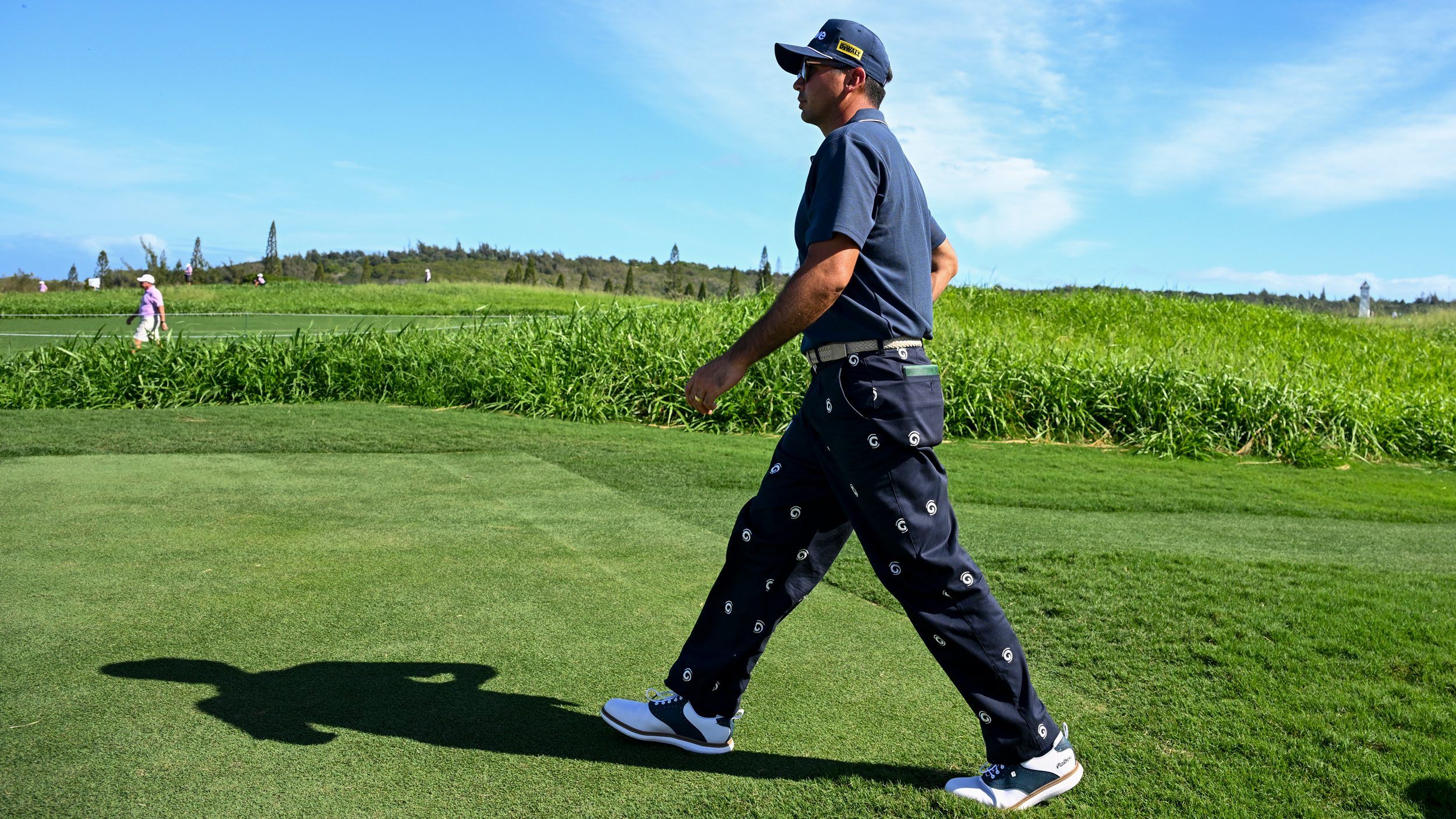
 News1 week ago
News1 week agoMalbon Has Jason Day Looking DAPPER for The Masters
-

 Fantasy Golf Predictions4 days ago
Fantasy Golf Predictions4 days agoFantasy Golf Picks, Odds, and Predictions – 2024 RBC Heritage
-
News7 days ago
U.S. Open Champ Takes a Dig at DeChambeau, but Is It Warranted?
-
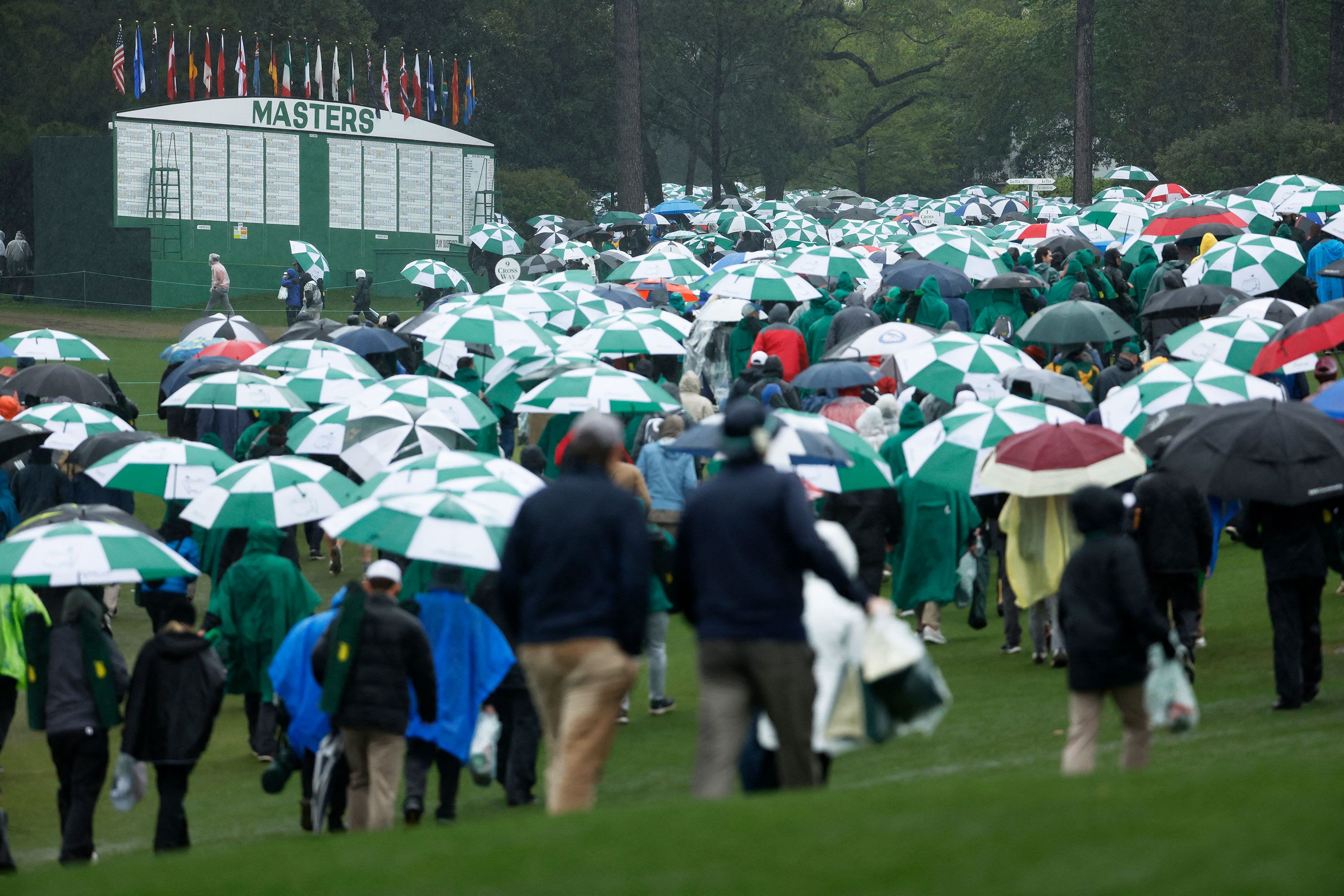
 News1 week ago
News1 week agoDark Skies Ahead: Masters Forecast to Favor Bad Weather Golfers
-

 News1 week ago
News1 week agoLANDSLIDE: Brandel Chamblee Predicts a Runaway Victory for Past Masters Champ
-
News6 days ago
WATCH: Frustrated Ryder Cup Caption has Choice Words for Masters Patrons
-

 Apparel1 week ago
Apparel1 week agoViktor Hovland Joins Team Puma


